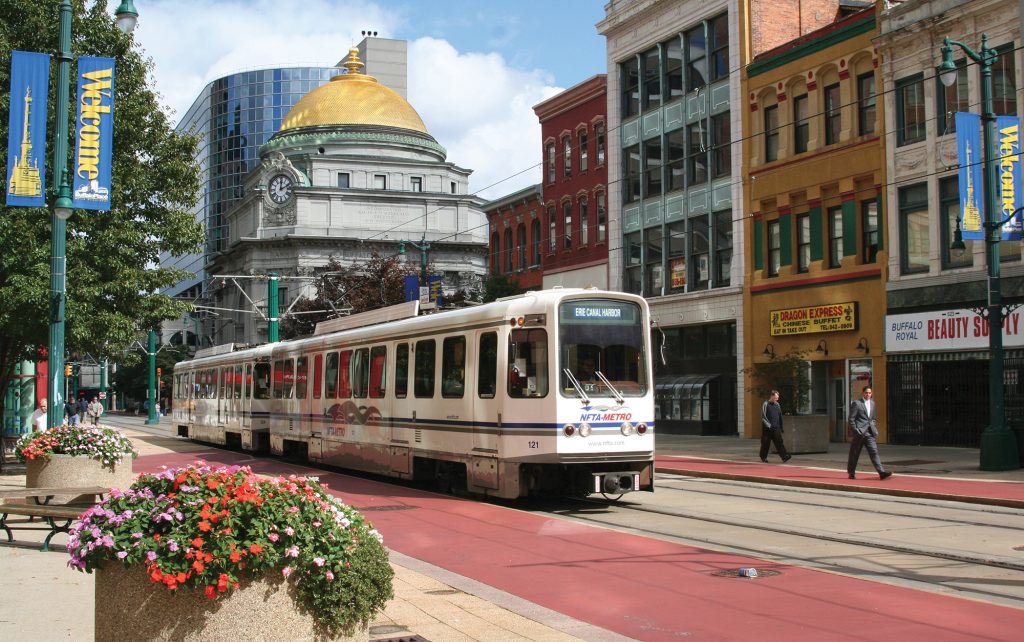Why Light Rail Expansion Helps Connect Communities
6/4/2024
The Niagara Frontier Transportation Authority (NFTA-Metro), Buffalo, NY—Western New York’s public transportation authority—is looking to expand its light rail system. The primary purpose is to provide a fast, reliable, safe, and convenient transit ride and to link established and emerging activity centers along the existing Metro Rail line in Buffalo with existing and emerging activity centers in Amherst and Tonawanda.

The project would serve existing Metro riders; attract new transit patrons; improve regional connections between Buffalo, Amherst, and Tonawanda; and support redevelopment and other economic development opportunities. Additionally, the proposed project would improve livability by increasing mobility and accessibility in communities throughout the region.
The need for enhanced, equitable, and sustainable, transit service has three main components: to serve existing and future travel demand generated by recent, pending, and future regional development; to provide high-quality regional transit service; and to better serve transit-dependent population segments.
The Buffalo metropolitan region is experiencing economic growth and transformation, including more than $1 billion of projects that have been recently completed, are under construction, or are planned for the corridor. As reported in the 2018 Comprehensive Transit-Oriented Development Plan, the existing and proposed Buffalo-Amherst-Tonawanda Corridor Transit Expansion is expected to experience faster population growth (an increase of 5.8 percent versus 1.3 percent for the region) and employment growth (an increase of 13.3 percent versus 12.5 percent for the region) than the balance of the region. Such growth, however, will require supporting infrastructure and public facilities and services, particularly regarding transportation.
Increasing development will increase the demand for work trips and non-work trips, including shopping, medical services, and entertainment. Expanded transportation options will be especially important for workers to have access to the increasing employment opportunities both in Buffalo and Amherst. As job and population growth occurs, transportation issues and challenges will need to be addressed, and improved public transit and increased transit usage will be an important part of the solutions.
Moreover, with a growing aging population and with a rising number of students, increased transit service would help the region respond to the travel challenges faced by transit-dependent populations and to changing demographic trends.